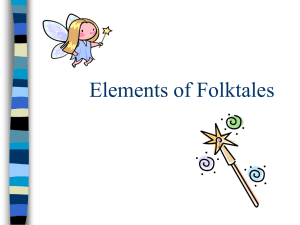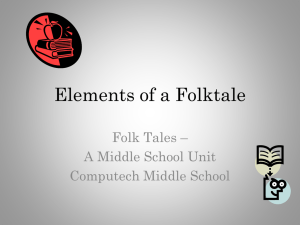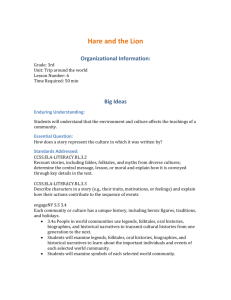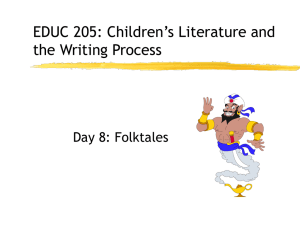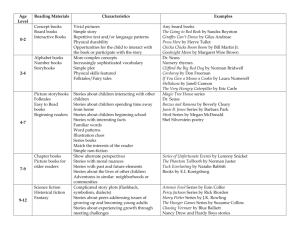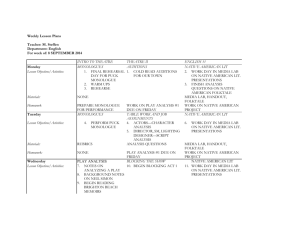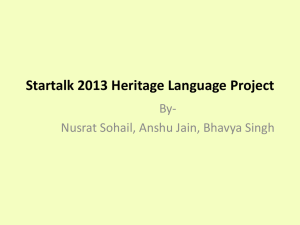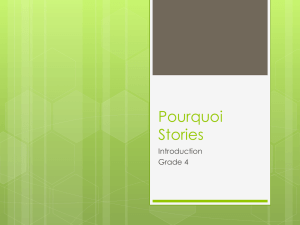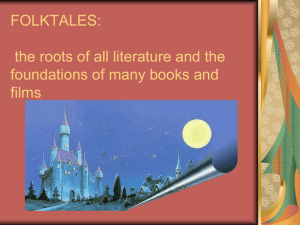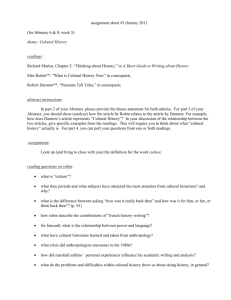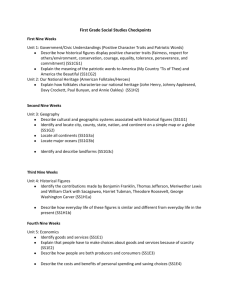Lesson one Folk tales revised
advertisement
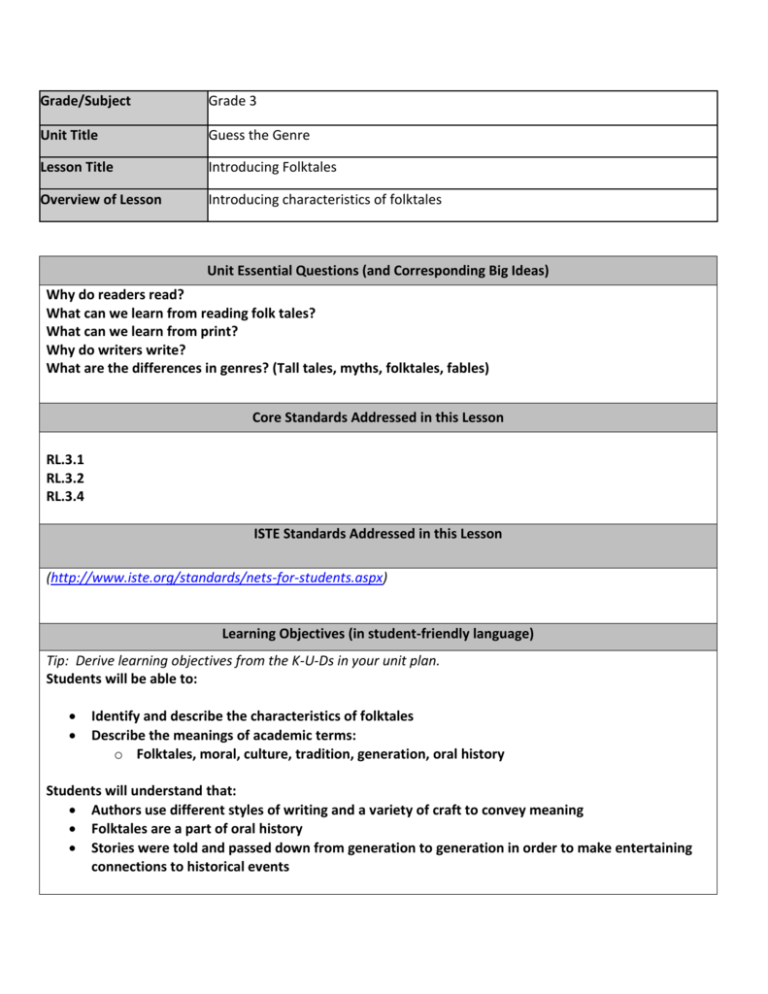
Grade/Subject Grade 3 Unit Title Guess the Genre Lesson Title Introducing Folktales Overview of Lesson Introducing characteristics of folktales Unit Essential Questions (and Corresponding Big Ideas) Why do readers read? What can we learn from reading folk tales? What can we learn from print? Why do writers write? What are the differences in genres? (Tall tales, myths, folktales, fables) Core Standards Addressed in this Lesson RL.3.1 RL.3.2 RL.3.4 ISTE Standards Addressed in this Lesson (http://www.iste.org/standards/nets-for-students.aspx) Learning Objectives (in student-friendly language) Tip: Derive learning objectives from the K-U-Ds in your unit plan. Students will be able to: Identify and describe the characteristics of folktales Describe the meanings of academic terms: o Folktales, moral, culture, tradition, generation, oral history Students will understand that: Authors use different styles of writing and a variety of craft to convey meaning Folktales are a part of oral history Stories were told and passed down from generation to generation in order to make entertaining connections to historical events Do: Ask/answer text based questions Determine central message, lesson, or moral and explain how it is conveyed through key details in the text Classify a piece of literature as a certain genre Use graphic organizers for note taking Lesson Focus Questions Why do we read folktales? What are characteristics of a folktale? Why are folktales so popular? What is the purpose of passing on folktales from generation to generation? Suggested Texts Title Stone Soup Author Marcia Brown BRIEF Synopsis Stone Soup is an old folk story in which hungry strangers persuade local people of a town to give them food. It is usually told as a lesson in cooperation, especially amid scarcity. Supplemental Materials and Resources Text: Stone Soup by Marcia Brown Chart paper with list of vocabulary words Preparation Required (and suggested) Genre Folktale Lexile/ F&P L/480 Create a list of vocabulary words on chart paper that will be used throughout teaching folktale lessons. Anticipated Misconceptions for This Lesson The difference between a tall tale and a folktale—a folktale is a story that is passed on from generation to generation, and has an underlying moral where the character learns a lesson. In a tall tale, characters are exaggerated and the sole purpose is for entertainment and humor. Lesson Development Post the vocabulary list. Ensure that each student has a copy of Stone Soup. Annotation Vocabulary words: folktale, oral history, moral, culture, generation, tradition Mini lesson: Tell students we are going to explore folktales. Spend a few minutes talking about the vocabulary list in order to introduce students to folktales. (A folktale tells a story with an underlying moral that is passed on from generation to generation where the character learns a lesson.) CLOSE READING: Introduce students to the idea that a good reader reads a text multiple times for different purposes. Model this throughout this lesson. Give students time to read Stone Soup by Marcia Brown to themselves or with a partner so that they can learn the story. Let them know that they will see the word “trudged” on the first page, and that to trudge is to walk along in a tired manner. Do the same for any words that they may stumble over, i.e. peasants, banquet, etc. Read the story aloud again as the students follow along. Pause to model your thinking aloud. Sample Text Dependent Questions (TDQs): Why did the author use the word “trudged” to describe what the soldiers were doing on the first page? What does this tell us about the soldiers? Students who read below grade level may read the book in a small group with the teacher. What does the author tell us about the peasants at the beginning of the story? What does the author tell us about the soldiers at the beginning of the story? Posing a question this way invites students back to the story to support their answers. You may want to go page by page to answer this question. How did the soldiers get what they needed from the peasants? The peasants gave the soldiers food, entertainment, and a place to stay. What did the soldiers give to the peasants? Give evidence from the text for your answer. How did the peasants change from the beginning of the story to the end of the story? What is the message the author of this story is trying to send? (lesson learned, moral…etc.) Formative Assessment Processes/Practices Teacher will use students’ responses during mini lesson to guide instruction in order to ensure that students understand the characteristics of folktales. Annotation
